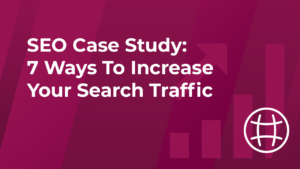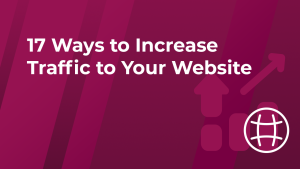How to Rank on Google Fast?
Just started a blog? Now’s the perfect time to leverage that initial energy to build a solid foundation for future growth.
To do that properly, you’ll need to harness the power of SEO.
In this article, I’ll share my 11-step SEO game plan for new bloggers to rank on Google faster.
Once your articles start ranking in organic search, you can tap into endless monetization possibilities and earn a good living from your blog.
Why listen to me? I’ve been blogging for over a decade. My most successful blog has not only replaced the income from my previous job but also enabled me to move to Europe and live a digital nomad lifestyle.
Let’s get into the game plan.
Step 1: Build your bank of long-tail keywords
Without proper keyword research, Google won’t understand the content of your blog, and it won’t send you much organic traffic.
So the first step in our game plan is to identify at least 30 long-tail, low-competition keywords in your niche.
Long-tail keywords are those more than four words long, such as “how to start a blog for free”.
One major benefit of long-tail keywords is they’re typically less competitive than shorter ‘head’ keywords (like “blogging”) because fewer people search for such specific phrases.
What’s more, large websites often don’t bother to target these low-volume keywords. That offers a perfect opportunity for you as a new blogger to snap them up instead.
One easy place to start is by finding question keywords in your niche, which tend to be long-tail and less competitive. Plus, by publishing valuable answers to these important questions, you’ll soon build your brand as an expert in the niche.
Step 2: Understand search intent before you write
Google’s main goal with search is to provide the best possible information for its users. That’s why understanding search intent is vital for good SEO.
‘Search intent’ is the objective of a Google user whenever they type words into the search bar.
For example, what would you expect to find when searching for “Chinese restaurants near me”?
You’d expect Google to show you a list of Chinese restaurants in your local area, right?
But if you typed in “how to cook egg fried rice at home”, you’d expect to see a list of recipe-based articles with instructions on how to prepare it.
So make sure you Google your target keyword and understand the search intent before writing your blog post.
Step 3: Write blog posts targeting your keywords
It’s important to write your blog posts in a specific way, to make sure Google’s crawler bots can understand exactly what each post is about. This process is called on-page SEO.
Don’t worry, you can follow this easy checklist to get your posts right every time.
You should include your main target keyword in the following locations on the page:
- Title
- First paragraph (and make it bold)
- URL slug
- Meta description
- At least one H2
- Several times throughout the body of the text (only where it naturally fits)
Don’t forget to space your text out into short paragraphs, use plenty of headings, and break the text up with bullet points and numbered lists. Add images where it makes sense to do so, but don’t overload the post.
Step 4: Start building internal links
Every blog should have a strong internal linking strategy. It’s the best way to make sure Google understands the relationships between your different blog posts.
Once you’ve published two or three posts on the same topic, you should start adding internal links between them. This will help you create a more cohesive and interconnected set of content that can be easily navigated by readers.
Most importantly, make sure your internal links lead your readers towards other content that’s relevant and will help them solve their problems.
Each time you publish a new blog post, make sure you add two or three internal links to other relevant posts. I recommend making this task an integral part of your regular publishing workflow.
Step 5: Track your progress with free tools
SEO is a slow process that requires consistency and patience. That’s one reason why many bloggers give up too soon before they see results.
One way to overcome this is by tracking your progress using Google Search Console and Google Analytics – which are two of the best tools for bloggers.
Together, these Google free tools help you understand and monitor your early results, helping you stay motivated and on track.
Google Search Console monitors your progress in organic search. In the early days of your blog, you’ll want to focus on increases in impressions. That means your posts are beginning to get ranked, even if they’re nowhere near page one yet.
Google Analytics monitors traffic to your site from all sources, including organic search, direct traffic, and social media traffic. So if you use your social media channels to promote your blog, you can monitor the traffic using this tool.
Step 6: Stake out your social media presence
Next up, make sure to stake out accounts for yourself on as many social media platforms as possible. Try to get the same handle on each platform, if it’s available.
Even if you don’t actively use these accounts, they can serve to give your blog some credibility. Once you’ve set up the accounts, create a short profile bio with a link back to your blog’s URL.
Those bio links won’t influence SEO directly because they’re normally ‘nofollow’ (meaning they don’t pass link juice), But they’re still useful because they signal to Google that you’ve got an online presence beyond the blog itself.
Step 7: Build your first backlinks
Once you’ve got some content published, you should start building external links to it. External links, known as ‘backlinks’, are important, because they’re a signal of credibility and popularity.
They tell Google that other websites trust you because they’re choosing to link to you. Think of backlinks as a vote of confidence. The more backlinks your site has, the more powerful it will be. And that means it’s more likely to rank higher in search results.
Google wants other websites to link to yours just because you have great content. But at the early stages, no one will see your content, so they won’t be able to link to it. That’s why you need to actively build backlinks to give your blog a boost.
It’s tempting to go to websites like Fiverr where you can buy thousands of backlinks for just a few dollars. Don’t do this. These links will be from low-value ‘link farms’ – websites created merely to sell backlinks.
Instead, focus on building backlinks using the following strategies:
- Responding to HARO queries from journalists via the HARO website
- Twitter (look for the hashtag “JournoRequest” – used by journalists looking for sources)
- Writing guest posts for other blogs in your niche and related areas
- Seeking guest slots on relevant podcasts (and getting a link to your homepage)
- Asking your professional network for guest posting opportunities (but remember to focus on relevancy)
As your website grows and becomes more visible, you’ll eventually start attracting backlinks organically.
Step 8: Get a head start on your email list
Many bloggers overlook the importance of having an email list. But in fact, it’s one of the most important steps in becoming a profitable blogger.
To get started, you can easily set up a free account on a platform like ConvertKit or MailChimp. Both of these allow you to have up to 1,000 email subscribers totally free of charge.
Then all you need to do is create a simple newsletter signup form and add it to your site after every blog post. You can also include the form on your homepage and sidebar if you have one.
For faster list-building, I recommend creating a free lead magnet on a relevant problem in your niche. This is far more compelling to your visitors than just signing up for a newsletter, so it’s likely to get more people onto your list faster.
Step 9: Focus on site speed
Site speed plays an essential role in providing a good user experience. That’s why Google sees it as a priority. Having a slow website will hamper your performance in organic search.
I recommend using a fast and well-designed WordPress theme, such as Generate Press, Astra, or Kadence. Another factor is having good quality hosting. I noticed a significant increase in my site speed since switching to WPX.
You should also take steps to optimize your blog post images, using a tool such as ShortPixel. Then install a plugin such as WP Total Cache, Litespeed Cache, or WP Rocket, to automatically optimize your site for the best performance.
Also, don’t forget to take advantage of WPX’s site optimization service. I did one recently and it helped me a lot (and the first one is totally free!)
Step 10: Publish regularly
The more you publish, the faster you’ll grow, and the sooner you’ll see results in SEO. After all, the more content Google has to work with, the more likely it is to rank you for some of it.
I recommend a publishing cadence of two to three times per week for optimal results. But if this is too much for you, aim to publish new content once a week as a bare minimum.
Any less than that, and you won’t see any growth for a long time – meaning you might give up too soon.
Step 11: Check in on your progress
Once you’ve been publishing new content consistently and following these steps for two to three months, it’s a good idea to check in on your progress.
You can use the free tools from Google to do this. The most important one is the Google Search Console. Open the dashboard, go to Performance > Search Results, and look for the purple line on the graph, which means impressions.
If you’ve been doing everything correctly, you should see an uptick in impressions.
This means Google is starting to pick up your blog posts. Keep going, you’re on the right track!
Conclusion
Making money from your blog is well within your capabilities.
But you’ll need a strong foundation of SEO skills, plus plenty of persistence to push through those slow early stages.
In this article, I discussed my 11-step SEO game plan to get your new blog ranking on Google as soon as possible.
It includes targeting long-tail keywords, writing correctly structured content, and building your first backlinks from reliable sources.
If you follow these steps and regularly publish good quality, well-optimized content, your blog will soon start to show up on Google.
From that point on, you’ll find tons of income-generating opportunities will emerge!





thank u.